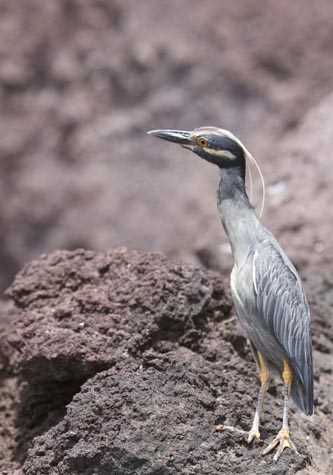This morning in an early activity, we visited one of the largest black sandy beaches in Galapagos. This place is a very important nesting ground for Pacific green sea turtles, and this time of the year they are hatching.
As soon as we disembarked, we had a visit from five juvenile Galapagos hawks that came to check on us. This is probably a unique interesting behavior that Galapagos animals adopted due to the absent of large mammal predators in this isolated archipelago.
These curious birds of prey are just learning the process of hunting their own food, which is probably the main reason why they gather along this beach, hoping for a baby turtle to emerge from its nesting ground.
It was just the beginning of our day, and we didn’t even have time to put our shoes on because of such an amazing welcoming committee we had.
Once we start our mile hike, we encountered a group of young scientists which were studying hawk and bird diseases in the Galapagos. This information is very important in order to make decisions and protect this fragile paradise.
Later in the morning we continued our activity in a place known as Buccaneers Cove; this location is good for Zodiac riding and snorkeling as well. Our National Geographic Islander guests had to decide between both of these two interesting activities; at the end of our morning activity everyone was just happy to have chosen their favorite.
Being here in Galapagos couldn’t be a better place to talk about Charles Darwin, especially because out of the nineteen days he spent on land, eleven of them were spent here on Santiago Island. After our talk in our main lounge given by expedition leader Lynn Fowler, we went out with big expectations and full of energy.
Egas Port is probably one of the best places in Galapagos for coastal area exploration. We had three groups out there, all of which were exploring, taking amazing pictures, and enjoying the sun as it disappeared behind Isabela Island.
The fauna was at its best with Galapagos fly-catchers and Galapagos mockingbirds trying to land on our guest’s heads. Galapagos fur seals and Galapagos sea lions were next to each other, making it possible to compare them.
Marine iguanas were just heading back from foraging at sea and looking for shelter to spend the night. Meanwhile some blue-footed boobies and pelicans were plunge diving, creating a feeding frenzy together with sea lions, brown noddy terns and frigates birds at the same time.







